Pediatric cold & flu
TYLENOL® offers a variety of children’s cold and flu formulas to relieve multiple symptoms for a range of pediatric patients

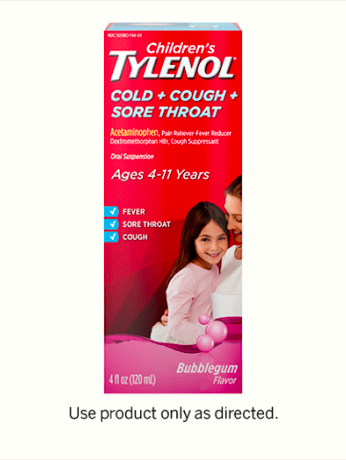
Children’s TYLENOL® Cold + Cough + Sore Throat Oral Suspension
Dosage Frequency
Repeat every 4 hours while symptoms last.
Do NOT give more than 5 doses in 24 hours.
If possible, use weight to dose; otherwise, use age.
mL = milliliter
Attention: use only enclosed dosing cup specifically designed for use with this product. Do not use any other dosing device.
All Infants’ and Children’s TYLENOL® products have the same strength of acetaminophen: 160 mg (in each 5 mL, tablet, or powder).
Weight | Age | Dose |
|---|---|---|
Under 36 lbs | Under 4 years | Do not use |
36-47 lbs | 4-5 years | 5 mL |
48-95 lbs | 6-11 years | 10 mL |
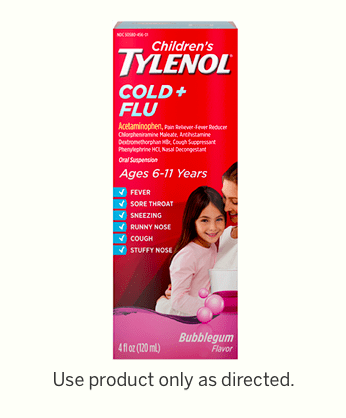
Children’s TYLENOL® Cold + Flu Oral Suspension
Dosage Frequency
Repeat every 4 hours while symptoms last.
Do NOT give more than 5 doses in 24 hours.
If possible, use weight to dose; otherwise, use age.
Weight | Age | Dose |
|---|---|---|
Under 36 lbs | Under 4 years | Do not use |
36-47 lbs | 4-5 years | Do not use unless directed by a doctor |
48-95 lbs | 6-11 years | 10 mL |

Children’s TYLENOL® Cold + Cough + Runny Nose Oral Suspension
Dosage Frequency
Repeat every 4 hours while symptoms last.
Do NOT give more than 5 doses in 24 hours.
If possible, use weight to dose; otherwise, use age.
mL = milliliter Attention: use only enclosed dosing cup specifically designed for use with this product. Do not use any other dosing device. All Infants’ and Children’s TYLENOL® products have the same strength of acetaminophen: 160 mg (in each 5 mL, tablet, or powder).
Weight | Age | Dose |
|---|---|---|
Under 36 lbs | Under 4 years | Do not use |
36-47 lbs | 4-5 years | Do not use unless directed by a doctor |
48-95 lbs | 6-11 years | 10 mL |

TYLENOL® Sinus + Headache Non-Drowsy Daytime Caplets
Age | FREQUENCY |
|---|---|
Children under 12 years | Do not use unless directed by a doctor |
Children 12 years and older | Take 2 caplets every 4 hours Do not take more than 10 caplets in 24 hours |
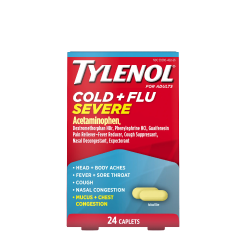
TYLENOL® Cold + Flu Severe Medicine
Age | FREQUENCY |
|---|---|
Children under 12 years | Do not use unless directed by a doctor |
Children 12 years and older | Take 2 caplets every 4 hours Do not take more than 10 caplets in 24 hours |
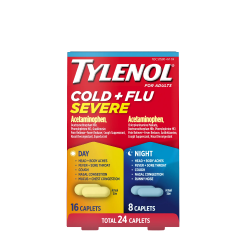
TYLENOL® Cold + Flu Severe Day and Night
Age | FREQUENCY |
|---|---|
Children under 12 years | Do not use unless directed by a doctor |
Children 12 years and older | Take 2 caplets every 4 hours Do not take more than 10 caplets in 24 hours |
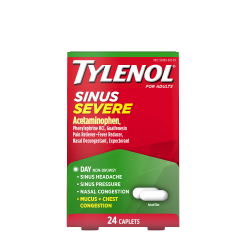
TYLENOL® Sinus Severe Daytime Pain Reliever
Age | FREQUENCY |
|---|---|
Children under 12 years | Do not use unless directed by a doctor |
Children 12 years and older | Take 2 caplets every 4 hours Do not take more than 10 caplets in 24 hours |
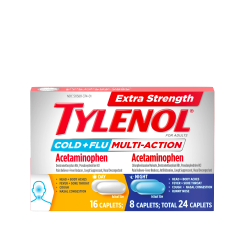
TYLENOL® Extra Strength Cold + Flu Multi-Action Day & Night Caplets
Age | FREQUENCY |
|---|---|
Children under 12 years | Do not use unless directed by a doctor |
Children 12 years and older | Take 2 caplets every 6 hours while symptoms last |
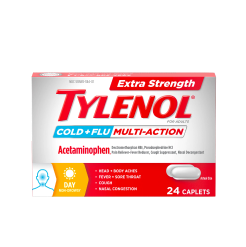
TYLENOL® Extra Strength Cold & Flu Multi-Action Daytime
Age | FREQUENCY |
|---|---|
Children under 12 years | Do not use unless directed by a doctor |
Children 12 years and older | Take 2 caplets every 6 hours while symptoms last Do not take more than 6 caplets in 24 hours, unless directed by a doctor |
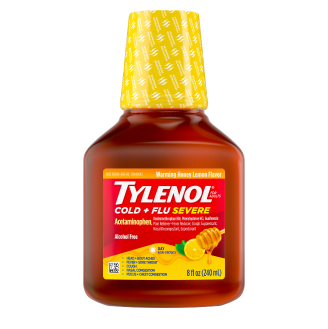
TYLENOL® Cold + Flu Severe Day Liquid
mL = milliliter
Use only enclosed dosing cup designed for use with this product. Do not use any other dosing device.
Age | FREQUENCY |
|---|---|
Children under 12 years | Do not use unless directed by a doctor |
Children 12 years and older | Take 30 mL in the dosing cup provided every 4 hours while symptoms last |

TYLENOL® Cold + Flu + Cough Nighttime Liquid
mL = milliliter
Use only enclosed dosing cup designed for use with this product. Do not use any other dosing device.
Age | FREQUENCY |
|---|---|
Children under 12 years | Do not use unless directed by a doctor |
Children 12 years and older | Take 30 mL in the dosing cup provided every 4 hours while symptoms last |
*When used as directed.
†Maximum strength lidocaine without a prescription.

Pediatric products and dosing
Find dosing charts and product information for all TYLENOL®, TYLENOL® Cold & Flu, and MOTRIN® infants’ and children’s products.

Cold & flu patient resources
Get tips for cold and flu prevention and treatment
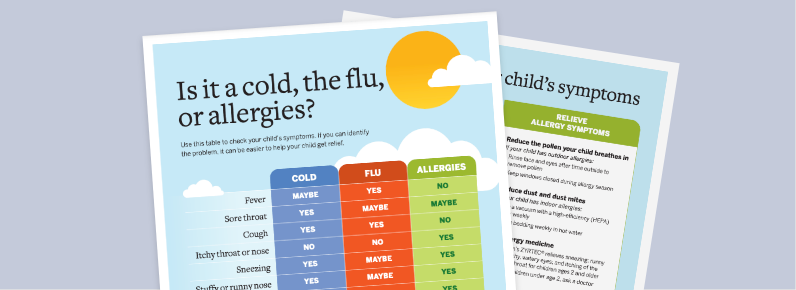
Is it a cold, the flu, or allergies?
Help parents and caregivers understand the differences
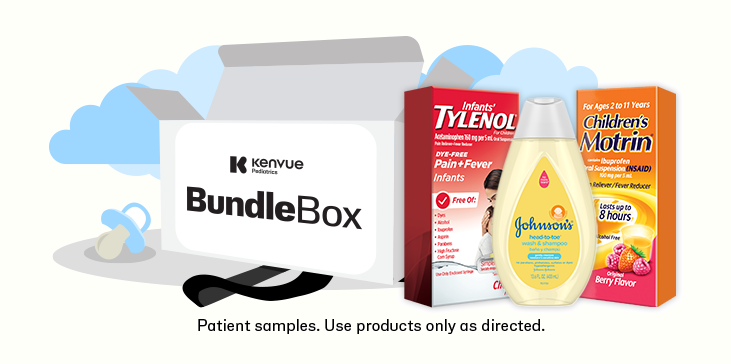
FREE monthly BundleBoxes
FREE samples, resources, and coupons from 11 pediatric brands.